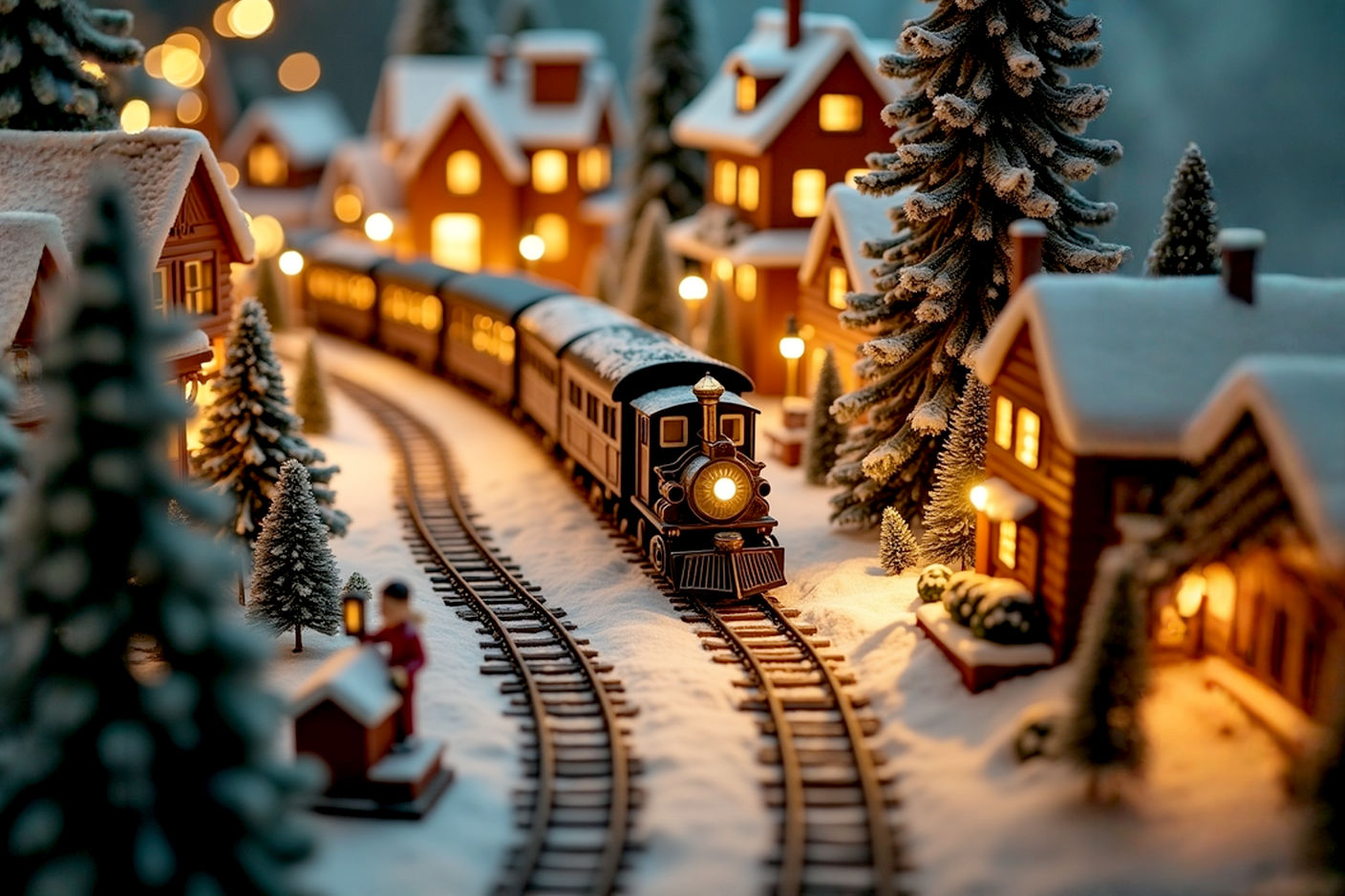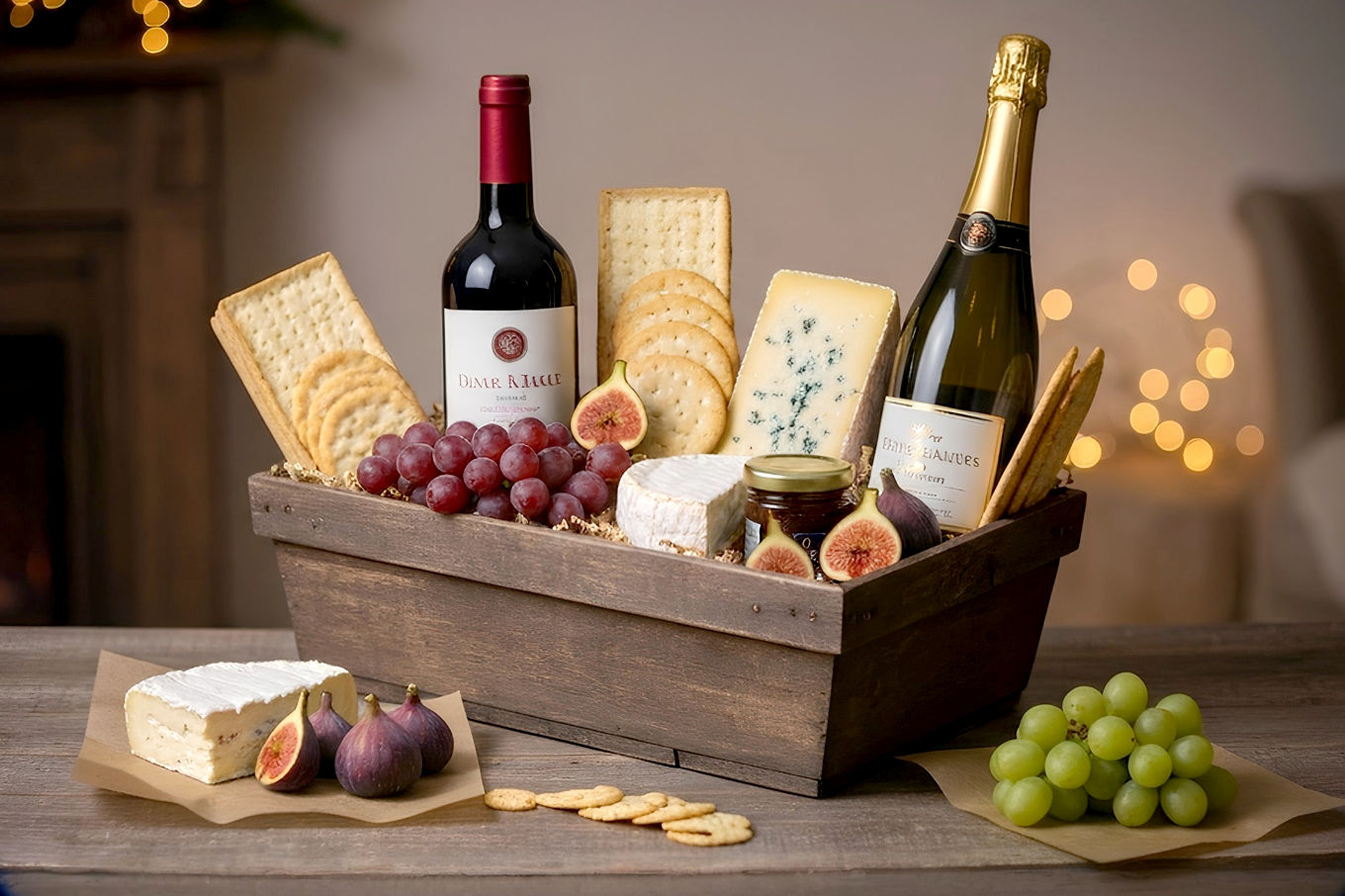This post may contain affiliate links. If you make a purchase through these links, we may earn a commission at no additional cost to you.
Nutcracker Dolls: An Introduction
Step into almost any home during the holiday season, and you’ll likely spot a familiar, stoic figure standing guard: the nutcracker doll. These charming wooden figures, often depicted as soldiers, kings, or other distinguished characters, have become an iconic symbol of Christmas. Yet, their appeal stretches far beyond mere seasonal decoration. Nutcracker dolls represent a fascinating blend of history, folklore, and intricate craftsmanship, holding a special place in the hearts of many. They don’t just sit on a mantelpiece; they tell a story, evoke a feeling, and connect us to traditions spanning centuries.
More Than Just a Decoration: The Nutcracker’s Deep Roots
While many people associate nutcrackers primarily with the festive period, their origins are much deeper and more practical. These weren’t always just decorative items. Historically, nutcrackers served a very real purpose: cracking nuts. Early versions were simple, functional tools, but over time, they evolved into the elaborate, hand-carved figures we recognize today. This transformation from a utilitarian object to a piece of art is a testament to human ingenuity and the desire to infuse everyday items with beauty and meaning. The journey of the nutcracker doll is a captivating tale of utility meeting artistry, evolving from a simple tool into a cherished cultural icon.
A Symbol of the Season: Why Nutcrackers Captivate Us
The undeniable charm of nutcracker dolls lies in their ability to evoke a sense of wonder and tradition. For many, they are intrinsically linked to childhood memories of Christmas, often brought to life by Tchaikovsky’s beloved ballet, The Nutcracker. Their stern yet friendly expressions, vibrant uniforms, and often whimsical details draw us in. They stand tall, seemingly ready to protect our homes and bring good fortune. This blend of historical significance, artistic beauty, and strong cultural associations makes the nutcracker doll more than just a holiday trinket; it’s a timeless piece of heritage that continues to captivate generations. We can’t help but feel a connection to these wooden guardians, year after year.
A Journey Through Time: The Rich History of Nutcracker Dolls
The story of the nutcracker doll is deeply intertwined with European folk art and the traditions of German craftsmanship. To truly appreciate their enduring charm, we must journey back to their beginnings, tracing their evolution from simple tools to celebrated works of art.
Humble Beginnings: The German Origins of Nutcracker Craftsmanship
The earliest forms of nutcrackers have existed for centuries, but the distinctive wooden figure we know today emerged from specific regions of Germany. These aren’t just random inventions; they are products of a unique cultural and economic landscape.
Early Functionality: From Tool to Toy
Before they became decorative figures, nutcrackers were, as their name suggests, practical devices for cracking nuts. Early designs were often simple levers or screw mechanisms made from metal or wood. However, by the 17th and 18th centuries, German woodcarvers began to experiment with more elaborate designs. They started shaping these tools into human or animal figures, giving them a more engaging and less purely utilitarian appearance. This marked the crucial shift from a mere tool to an object that also possessed aesthetic appeal. People found joy in using a tool that also looked interesting.
The Erzgebirge Region: A Cradle of Nutcracker Artistry
The Erzgebirge mountains (Ore Mountains) in southeastern Germany are widely recognized as the birthplace of the modern nutcracker doll. This region, bordering the Czech Republic, had a rich history of mining. When the mining industry declined in the 18th century, many local residents turned to woodcarving as a new means of livelihood. They possessed exceptional skills in working with wood, and their ingenuity led to the creation of various wooden folk art items, including smoking men, Christmas pyramids, and, of course, nutcracker dolls. The abundance of wood and the skilled hands of the artisans made Erzgebirge the perfect environment for this craft to flourish. It became a hub for this unique form of artistry.
The Rise of the Nutcracker King: Popularity in the 19th Century
The 19th century saw the nutcracker doll gain significant popularity, evolving into the iconic figure we cherish today. This period was crucial for solidifying its place in German folk tradition and beyond.
Wilhelm Füchtner: The Father of the Modern Nutcracker
One name stands out in the history of nutcracker dolls: Wilhelm Füchtner. A wood turner from Seiffen in the Erzgebirge region, Füchtner is often credited with creating the first commercial nutcracker doll around 1870. His designs, particularly the soldier figures with their distinctive uniforms and stern expressions, became incredibly popular. Füchtner’s workshop, which still operates today, established the classic look and feel of the traditional nutcracker. He didn’t just make a nutcracker; he designed a character that resonated with people. His meticulous craftsmanship and artistic vision set the standard for generations of nutcracker makers.
Mass Production and Wider Appeal: Spreading the Tradition
As the 19th century progressed, the demand for nutcracker dolls grew, leading to more widespread production. While many were still handmade, workshops began to streamline their processes, allowing for greater output. The figures became more accessible to a broader audience, both within Germany and eventually across Europe. They were no longer just regional curiosities; they were becoming a beloved part of Christmas traditions in many households. The spread of these charming figures was a natural progression as people sought to bring festive cheer into their homes.
The American Embrace: Nutcrackers Cross the Atlantic
The nutcracker doll’s journey to global recognition truly took off after World War II. American soldiers stationed in Germany discovered these unique wooden figures and brought them home as souvenirs. This introduction sparked a growing interest in the United States. However, it was the immense popularity of Tchaikovsky’s The Nutcracker ballet, especially its annual televised performances starting in the 1960s, that cemented the nutcracker doll’s status as a quintessential American Christmas icon. The ballet brought the character to life for millions, transforming a German folk art item into a universal symbol of holiday magic.
The Nutcracker’s Symbolic Significance: Beyond the Festive Facade
Nutcracker dolls are more than just pretty decorations or historical tools; they carry a rich tapestry of symbolic meanings that have evolved over centuries. These meanings contribute significantly to their enduring charm and their deep connection to the festive season.
Guardians Against Evil: Ancient Beliefs and Protectors of the Home
One of the oldest and most compelling symbolic meanings associated with nutcracker dolls is their role as protectors. In German folklore, these figures were believed to be guardians of the home, warding off evil spirits and bad luck. Their stern, often fierce expressions were thought to frighten away negative influences. People would place them near fireplaces or doorways, trusting these wooden sentinels to keep their families safe. This protective quality adds a layer of depth to their presence, making them feel like more than just inanimate objects. They stand as silent protectors, watching over our households.
Good Luck Charms: Bringing Prosperity and Joy
Beyond protection, nutcracker dolls are also widely considered symbols of good luck. Their presence is thought to bring prosperity, happiness, and positive energy into the home. This belief stems from the idea that by “cracking” open tough nuts, the nutcracker symbolically breaks through life’s challenges and difficulties, revealing the sweet rewards within. This optimistic symbolism makes them a popular gift, intended to bestow good fortune upon the recipient. They represent the triumph over adversity, bringing a sense of hope and joy.
Strength and Reliability: The Nutcracker’s Stoic Demeanor
The very function of a nutcracker, to break open hard shells, imbues it with qualities of strength and reliability. The figures themselves often embody these traits, with their upright posture, strong jaws, and resolute expressions. They appear capable and dependable, ready to tackle any challenge. This stoic demeanor contributes to their appeal, suggesting a steadfast presence that can be counted on. They are silent testaments to resilience, standing firm against the odds.
A Bridge to Childhood: Evoking Nostalgia and Wonder
For many, the nutcracker doll is a powerful trigger for nostalgia and childhood wonder. Their association with Christmas, a time often filled with magic and innocence, links them directly to cherished memories. The whimsical nature of some designs, coupled with the enchanting story of The Nutcracker ballet, transports adults back to a simpler time and inspires imagination in children. They become a tangible link to the joy and enchantment of the holiday season, reminding us of the magic that once filled our early years. This emotional connection is a significant part of their lasting appeal.
The Art of Creation: Crafting a Traditional Nutcracker Doll
The creation of a traditional nutcracker doll is a testament to skilled craftsmanship, involving a meticulous process passed down through generations. These aren’t mass-produced toys in the conventional sense; they are often works of art, each with its own unique character.
Materials of Choice: The Foundation of a Fine Nutcracker
The quality and longevity of a nutcracker doll begin with the careful selection of its raw materials, primarily wood and various finishing agents.
Wood Selection: From Spruce to Maple
Traditional German nutcrackers are almost exclusively crafted from local hardwoods. Common choices include spruce, maple, beech, and birch. These woods are preferred for their durability, fine grain, and ease of carving and turning. Spruce, for example, is relatively soft but holds detail well, while maple offers greater density and strength, making it ideal for the moving parts of the mechanism. The wood is typically seasoned for an extended period to prevent warping or cracking after the doll is finished. This careful selection ensures the final product will last for many years.
Paints and Finishes: Bringing Characters to Life
Once the wood components are shaped, they are brought to life with vibrant colors and protective finishes. Artisans use a variety of paints, often acrylics or oil-based paints, to create the intricate details of uniforms, faces, and accessories. These paints are chosen for their rich pigmentation and durability. After painting, a clear lacquer or varnish is applied. This protective layer not only enhances the colors and gives the doll a polished look but also shields the wood and paint from dust, moisture, and minor abrasions, ensuring the artwork remains vibrant for decades. The finishing touches are crucial for both aesthetics and preservation.
The Master Craftsman’s Touch: A Step-by-Step Process
Creating a traditional nutcracker doll is a multi-step process that combines woodworking techniques with artistic painting. Each stage requires precision and skill.
Turning the Body: Shaping the Core
The process typically begins on a wood lathe. A block of seasoned wood is mounted and spun rapidly while the craftsman uses specialized chisels and gouges to shape the main body of the nutcracker. This includes forming the head, torso, and legs as a single, continuous piece. The lathe allows for perfect symmetry and smooth contours, forming the foundational shape of the doll. This initial shaping sets the stage for all subsequent details.
Carving the Details: Faces, Hair, and Features
Once the basic body is turned, the intricate details are added through hand-carving. This is where the nutcracker’s personality truly emerges. Artisans meticulously carve the facial features—eyes, nose, mouth, and chin—along with hair, beards, and any specific elements of the character’s uniform, such as buttons, epaulets, or hat details. Small, sharp carving tools are used to achieve the fine lines and textures that give each doll its unique expression. This stage demands exceptional precision and artistic sensibility.
Assembly: Bringing the Pieces Together
After the individual components—the main body, arms, hands, feet, and any accessories like swords or scepters—are carved and prepared, they are carefully assembled. This often involves dowel joints, pegs, and wood glue to securely connect the pieces. The arms are typically attached at the shoulders, allowing for some limited movement in some designs. The hat, an essential part of the nutcracker’s character, is also affixed securely at this stage. Precision in assembly ensures the doll is sturdy and well-proportioned.
Painting and Decoration: The Final Flourish
This is arguably the most visually striking part of the process. The assembled nutcracker is meticulously hand-painted. Artisans apply multiple layers of paint, often starting with base coats and then adding finer details with smaller brushes. They pay close attention to historical accuracy for soldier figures or whimsical flair for fantasy characters. Gold leaf, glitter, and other decorative elements might be added to enhance the visual appeal, making each doll a vibrant work of art. The painting transforms the carved wood into a lively character.
The Lever Mechanism: Engineering the Cracking Function
For functional nutcrackers, the crucial element is the lever mechanism that allows the mouth to open and close. This involves a precisely cut lever, often made of wood or metal, that is inserted into the back of the nutcracker’s head. When the lever is pushed down, the lower jaw moves upwards, pressing the nut against the upper jaw. The engineering of this simple yet effective mechanism ensures that the nutcracker can still perform its original task, even if its primary role is now decorative. This practical aspect connects the modern doll to its historical roots.
Modern Variations: Adapting Traditional Techniques
While traditional methods remain highly valued, modern nutcracker production sometimes incorporates contemporary tools and techniques. Computer Numerical Control (CNC) machines might be used for initial turning or rough carving, especially for larger production runs. However, the finishing details, painting, and assembly are almost always still performed by hand to maintain the artisanal quality. This blend of old and new allows for both efficiency and the preservation of the craft’s artistic integrity. Even with new tools, the human touch remains essential.
Iconic Figures: Exploring Types of Nutcracker Dolls
The world of nutcracker dolls is incredibly diverse, extending far beyond the familiar soldier. While certain figures are instantly recognizable, the variety of characters reflects a rich history and a boundless imagination.
Traditional Soldiers: The Classic Christmas Icon
The most iconic and widely recognized nutcracker doll is undoubtedly the soldier figure. These are typically depicted in elaborate, often Prussian or Napoleonic-era military uniforms, complete with tall hats, epaulets, and intricate button details. Their stern expressions and upright posture convey a sense of discipline and readiness. These soldier nutcrackers are directly linked to the popular image of the Nutcracker Prince from the ballet and are a staple of Christmas decorations worldwide. They embody the classic, traditional look that many people associate with the holiday.
Kings and Royalty: Figures of Authority and Grandeur
Another very popular type is the king or royalty nutcracker. These figures often wear crowns, regal robes, and carry scepters, exuding an air of authority and grandeur. They symbolize leadership, wisdom, and often the benevolent spirit of the season. King nutcrackers frequently feature prominent beards and majestic attire, making them stand out as central figures in any collection. Their presence adds a touch of majesty and historical significance.
Professions and Hobbies: Diverse Characters Reflecting Life
Beyond soldiers and kings, nutcracker dolls frequently portray a wide array of everyday professions and hobbies, reflecting the lives and livelihoods of the people who originally crafted them. These figures offer a charming glimpse into historical occupations and local culture.
Miners and Foresters: Honoring Regional Heritage
Given the Erzgebirge region’s history, miners and foresters are traditional and highly significant nutcracker characters. Miners, often depicted with lamps and tools, pay homage to the area’s mining heritage, which was once its primary industry. Foresters, dressed in green or brown, represent the region’s deep connection to its natural environment and the importance of forestry. These figures are a direct link to the real-life people and industries that shaped the communities where nutcrackers originated. They are a tribute to the local history.
Musicians and Bakers: Everyday Heroes
Other popular professional figures include musicians, often holding instruments like trumpets or drums, and bakers, complete with chef hats and rolling pins. These characters celebrate the everyday roles and talents within a community. They bring a sense of warmth and familiarity, representing the diverse fabric of society. You might also find doctors, postmen, or even Santa Claus figures, each adding a unique touch to the nutcracker family. They show that heroes come in all forms.
Animal Nutcrackers: Whimsical and Unique Designs
While human figures dominate, animal nutcrackers also exist, offering a more whimsical and unique twist on the tradition. These can range from squirrels and bears, which are natural nut-eaters, to more fantastical creatures. Animal nutcrackers often appeal to collectors looking for something a bit different or those who appreciate a more playful aesthetic. They demonstrate the versatility of the nutcracker form.
Themed and Limited Editions: Collectibles for Every Passion
In modern times, nutcracker makers produce a vast array of themed and limited-edition dolls. These can include characters from popular culture, historical figures, sports teams, or specific holiday themes beyond Christmas, such as Halloween or Easter. Limited editions, often produced in small quantities, are highly sought after by collectors. This expansion of themes ensures that there’s a nutcracker out there to appeal to almost any interest or passion, making collecting an even more engaging pursuit. They cater to a wide range of tastes and preferences.
The Ballet’s Enduring Influence: The Nutcracker and Tchaikovsky’s Masterpiece
It’s impossible to discuss the enduring charm of nutcracker dolls without acknowledging the profound impact of Pyotr Ilyich Tchaikovsky’s The Nutcracker ballet. This enchanting production transformed a regional German folk art item into a global icon of Christmas.
From Story to Stage: E.T.A. Hoffmann’s “The Nutcracker and the Mouse King”
The ballet’s narrative is based on E.T.A. Hoffmann’s 1816 short story, “The Nutcracker and the Mouse King.” Hoffmann’s tale is darker and more complex than the ballet adaptation, featuring a young girl named Marie (or Clara in the ballet) who receives a nutcracker doll as a Christmas gift. The doll comes to life and battles the wicked Mouse King, leading Marie into a magical world. This original story provided the imaginative foundation for what would become one of the most beloved ballets of all time. It laid the groundwork for a timeless fantasy.
Tchaikovsky’s Magical Score: A Symphony for the Ages
In 1892, Russian composer Pyotr Ilyich Tchaikovsky was commissioned to write the music for a ballet adaptation of Hoffmann’s story. His score for The Nutcracker is nothing short of a masterpiece. It features iconic pieces like the “Dance of the Sugar Plum Fairy,” “Waltz of the Flowers,” and the “March.” Tchaikovsky’s music is rich, vibrant, and perfectly captures the magical, dreamlike atmosphere of the story. The score’s inventive use of instruments, such as the celesta for the Sugar Plum Fairy, creates a unique and unforgettable auditory experience. This music is instantly recognizable and deeply ingrained in our collective consciousness.
A Christmas Staple: The Ballet’s Role in Popularizing the Nutcracker
While The Nutcracker ballet initially received mixed reviews, it slowly gained popularity, especially in the United States. Its widespread adoption as an annual Christmas tradition, particularly after its first full-length American performance in 1944 by the San Francisco Ballet and subsequent televised broadcasts, cemented its status. The ballet introduced countless people to the idea of the nutcracker doll as a heroic, magical figure. It transformed the wooden tool into a character of fantasy and wonder, directly linking it to the joy and enchantment of the holiday season. The ballet’s ubiquity made the nutcracker doll a household name.
The Nutcracker Effect: How the Ballet Shaped Perceptions
The ballet’s influence on the perception of nutcracker dolls cannot be overstated. Before the ballet, they were primarily folk art and functional items. After, they became symbols of Christmas magic, childhood dreams, and festive celebration. The ballet’s narrative, with its themes of imagination, bravery, and transformation, imbued the dolls with a deeper emotional resonance. This connection elevated the nutcracker from a simple decorative object to an emblem of holiday spirit, forever linking it to the most wonderful time of the year. It reshaped how the world viewed these charming figures.
Collecting Nutcracker Dolls: A Passionate Pursuit
For many enthusiasts, nutcracker dolls are more than just seasonal decor; they are cherished collectibles, each with its own story and value. The pursuit of rare, historical, or uniquely crafted nutcrackers can be a lifelong passion.
What Makes a Nutcracker Collectible?
Not all nutcracker dolls are created equal in the eyes of a collector. Several factors contribute to a nutcracker’s desirability and monetary value. Understanding these elements is key to building a valuable collection.
Age and Rarity: The Value of History
Generally, older nutcrackers tend to be more valuable, especially those from the 19th or early 20th century, particularly if they originate from the Erzgebirge region and can be attributed to known workshops. Rarity also plays a significant role. Limited edition pieces, prototypes, or those from short-lived production runs are often highly sought after due to their scarcity. A nutcracker that is one of only a few ever made will naturally command a higher price. The older and harder to find a piece is, the more it’s worth.
Maker and Provenance: Identifying Masterpieces
The maker of a nutcracker is a crucial factor in its collectibility. Pieces from renowned German workshops like Steinbach, KWO, Ulbricht, and Füchtner are highly prized. Knowing the provenance—the history of ownership and origin—can also add significant value, especially if a piece has a documented history or was part of a famous collection. Authentic markings, signatures, or original packaging can help verify a nutcracker’s maker and add to its appeal. Collectors often look for these specific indicators of origin.
Condition and Originality: Preserving Value
The condition of a nutcracker is paramount. Collectors typically seek pieces that are in excellent, original condition, with minimal paint loss, chips, or repairs. While minor wear is acceptable for antique pieces, extensive damage significantly reduces value. Originality is also important; pieces that have been heavily restored, repainted, or have non-original parts are less desirable than those that retain their authentic state. Preserving a nutcracker’s original state is key to maintaining its value.
Starting Your Collection: Tips for New Enthusiasts
Beginning a nutcracker collection can be an exciting journey. Here are some tips to help new enthusiasts navigate the world of collecting.
Researching Authenticity: Knowing What You’re Buying
Before making a purchase, especially for higher-value pieces, it’s crucial to research the authenticity of the nutcracker. Learn about the distinguishing features of different makers, their typical styles, and common markings. Consult reputable collecting guides, online forums, or even expert appraisers. Be wary of deals that seem too good to be true, as counterfeits or heavily damaged pieces can sometimes be misrepresented. Knowing your subject matter helps you make informed decisions.
Display and Storage: Protecting Your Investment
Proper display and storage are essential for preserving your collection. Display nutcrackers away from direct sunlight, which can fade colors, and away from extreme temperature fluctuations or high humidity, which can damage wood. When storing them, especially off-season, use acid-free tissue paper or bubble wrap and sturdy boxes to protect them from dust and physical damage. Proper care ensures your investment remains in prime condition for years to come.
Famous Makers and Brands: A Collector’s Guide
Several manufacturers and artisans have become synonymous with high-quality, collectible nutcracker dolls. Knowing these names is a good starting point for any serious collector.
Steinbach Nutcrackers: A Legacy of Excellence
The Steinbach family from Hohenhameln, Germany, is perhaps the most famous name in nutcracker production. Their nutcrackers are renowned for their intricate details, high quality, and often whimsical designs. The Steinbach company has produced countless themed nutcrackers, including historical figures, literary characters, and professions, making them highly sought after by collectors worldwide. Their reputation for excellence is well-deserved.
Christian Steinbach: The “King of Nutcrackers”
Within the Steinbach legacy, Christian Steinbach (1915-2008) is particularly celebrated. He was instrumental in popularizing nutcrackers in the United States after World War II and became known as the “King of Nutcrackers.” His innovative designs and commitment to traditional craftsmanship helped elevate the nutcracker to a true art form. His signature on a nutcracker significantly increases its value and desirability among collectors.
KWO and Ulbricht: Renowned Erzgebirge Artisans
Other highly respected Erzgebirge manufacturers include KWO (Kunstgewerbe Werkstätten Olbernhau) and Ulbricht (Christian Ulbricht GmbH & Co. KG). KWO is known for its distinctive, often more stylized nutcracker designs, while Ulbricht maintains a strong tradition of classic, detailed figures. Both companies uphold the high standards of German woodcraft and are recognized for their quality and artistic integrity. These makers continue the rich tradition of the region.
Caring for Your Nutcracker: Preserving a Cherished Heirloom
Nutcracker dolls, especially those made from wood and hand-painted, require proper care to ensure their longevity and preserve their beauty. Treating them with care helps them remain cherished heirlooms for generations.
Cleaning and Maintenance: Keeping Your Nutcracker Pristine
Regular, gentle cleaning is key to keeping your nutcracker looking its best. Dust is the primary enemy of painted wood. Use a soft, dry brush (like a clean paintbrush or a soft makeup brush) to gently remove dust from all crevices and surfaces. For more stubborn dirt, a slightly damp cloth can be used sparingly, but always ensure the cloth is almost dry to avoid water damage to the paint or wood. Avoid harsh chemical cleaners, as these can strip paint or damage finishes. A light, dry dusting is usually sufficient.
Repairing Minor Damage: Simple Fixes for Common Issues
Minor damage, such as small chips in the paint or loose accessories, can often be repaired at home. For paint chips, touch-up paints that match the original color can be carefully applied using a fine brush. For loose parts, a small amount of wood glue or a strong craft adhesive can reattach them. Always apply glue sparingly and hold the piece in place until it sets. For more significant damage, or if you’re unsure, it’s best to consult a professional restorer who specializes in wooden folk art. Don’t attempt repairs you’re not confident about.
Environmental Considerations: Protecting Against Wear and Tear
The environment in which your nutcracker is displayed or stored plays a crucial role in its preservation. Avoid direct sunlight, which can cause colors to fade and wood to crack. Keep nutcrackers away from heat sources like radiators or fireplaces, as excessive heat can dry out the wood and lead to warping or cracking. Humidity fluctuations are also detrimental; very dry conditions can cause cracking, while high humidity can lead to swelling or mold. A stable environment with moderate temperature and humidity is ideal. Consider a display case for added protection from dust and accidental bumps.
Long-Term Storage: Ensuring Longevity
When storing nutcrackers for extended periods, especially during the off-season, proper packing is essential. Wrap each nutcracker individually in acid-free tissue paper or soft cloth to prevent scratching and protect painted surfaces. Avoid using newspaper, as the ink can transfer. Place wrapped nutcrackers in sturdy boxes, ideally with padding like bubble wrap or packing peanuts to prevent movement and absorb shocks. Store boxes in a cool, dry place, away from attics or basements where temperature and humidity can fluctuate wildly. Careful storage helps them last for many years.
The Nutcracker Today: A Modern Revival and Global Appeal
While deeply rooted in tradition, the nutcracker doll continues to evolve, finding new expressions and reaching a global audience. Its charm is far from diminishing; it’s adapting and thriving in the modern world.
Beyond Christmas: Year-Round Appreciation
While undeniably a Christmas icon, nutcracker dolls are increasingly appreciated year-round by collectors and art enthusiasts. Many themed nutcrackers, such as those representing specific professions, historical figures, or hobbies, are displayed outside the holiday season. They serve as decorative pieces that reflect personal interests or as year-round reminders of the craftsmanship and artistry they embody. This expansion beyond seasonal decor highlights their appeal as genuine folk art.
Contemporary Designs: Blending Tradition with Innovation
Modern nutcracker makers are not just replicating classic designs; they are also innovating. Contemporary nutcrackers might feature sleeker lines, abstract forms, or unexpected color palettes. Some artists create highly personalized or satirical nutcrackers that reflect current events or pop culture. While respecting the traditional form, these new designs push the boundaries, appealing to a broader audience and ensuring the art form remains fresh and relevant. This blend of old and new keeps the tradition vibrant.
Global Reach: Nutcrackers Around the World
What began as a regional German craft has truly achieved global recognition. Nutcracker dolls are now sold and collected worldwide, embraced by diverse cultures who appreciate their charm and the festive spirit they represent. While Germany remains the heartland of traditional production, other countries also produce their own versions, sometimes incorporating local cultural elements. This global reach underscores the universal appeal of these charming figures. They have transcended their origins to become a truly international symbol.
The Future of a Timeless Tradition: Enduring Appeal
The future of the nutcracker doll tradition looks bright. Its ability to evoke nostalgia, its connection to a beloved ballet, and the continued dedication of skilled artisans ensure its enduring appeal. As new generations discover the magic of these wooden figures, the tradition will continue to thrive, adapting to new tastes while always honoring its rich history. The nutcracker doll isn’t just a relic of the past; it’s a living tradition that continues to bring joy and wonder to homes around the globe. Its charm is truly timeless.
Conclusion: The Unbreakable Spell of the Nutcracker Doll
The nutcracker doll, with its stern gaze and colorful uniform, is far more than a simple holiday decoration. It’s a powerful symbol steeped in centuries of history, folklore, and meticulous craftsmanship. From its humble beginnings as a functional tool in the Erzgebirge mountains of Germany to its starring role in a world-renowned ballet, the nutcracker has woven itself into the fabric of our festive traditions.
A Legacy of Craftsmanship and Charm
Each traditional nutcracker represents a legacy of skill, patience, and artistic dedication. The careful turning of wood, the intricate hand-carving of features, and the vibrant application of paint all contribute to a unique work of art. These figures stand as testaments to the enduring value of handmade objects in an increasingly mass-produced world. Their charm lies not just in their appearance, but in the story of their creation.
More Than Just a Keepsake: A Storyteller of History and Hope
Whether standing guard against evil spirits, bringing good luck, or simply evoking cherished childhood memories, nutcracker dolls hold a special place in our hearts. They are storytellers, whispering tales of German forests, grand ballets, and the magic of Christmas. As they continue to adapt to modern tastes while honoring their rich past, the nutcracker doll remains a timeless tradition, an enduring symbol of joy, protection, and the unbreakable spell of the holiday season. They remind us of the beauty in tradition and the power of a simple, well-crafted object to bring immense delight.






